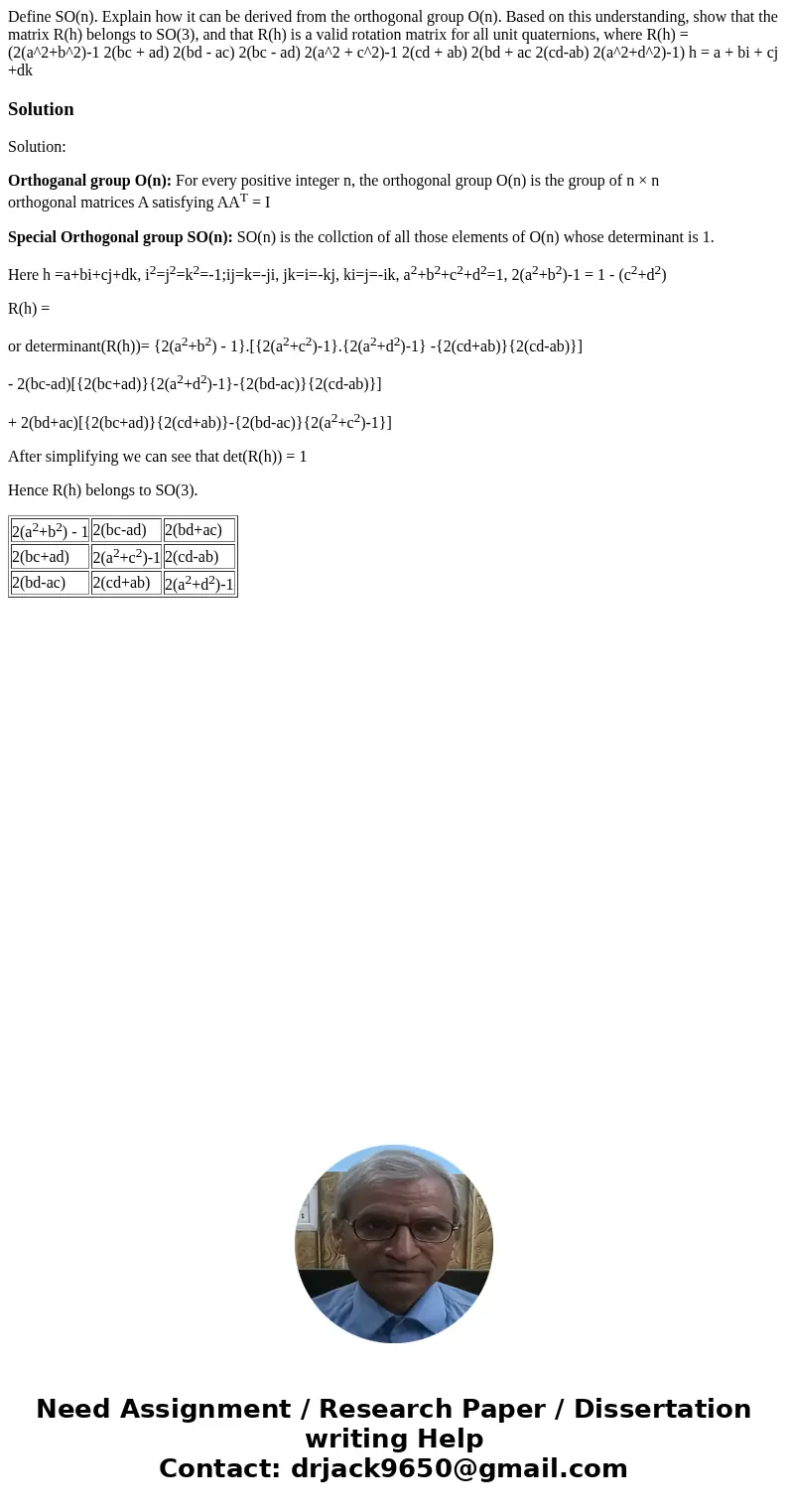Define SOn Explain how it can be derived from the orthogonal
Define SO(n). Explain how it can be derived from the orthogonal group O(n). Based on this understanding, show that the matrix R(h) belongs to SO(3), and that R(h) is a valid rotation matrix for all unit quaternions, where R(h) = (2(a^2+b^2)-1 2(bc + ad) 2(bd - ac) 2(bc - ad) 2(a^2 + c^2)-1 2(cd + ab) 2(bd + ac 2(cd-ab) 2(a^2+d^2)-1) h = a + bi + cj +dk

Solution
Solution:
Orthoganal group O(n): For every positive integer n, the orthogonal group O(n) is the group of n × n
orthogonal matrices A satisfying AAT = I
Special Orthogonal group SO(n): SO(n) is the collction of all those elements of O(n) whose determinant is 1.
Here h =a+bi+cj+dk, i2=j2=k2=-1;ij=k=-ji, jk=i=-kj, ki=j=-ik, a2+b2+c2+d2=1, 2(a2+b2)-1 = 1 - (c2+d2)
R(h) =
or determinant(R(h))= {2(a2+b2) - 1}.[{2(a2+c2)-1}.{2(a2+d2)-1} -{2(cd+ab)}{2(cd-ab)}]
- 2(bc-ad)[{2(bc+ad)}{2(a2+d2)-1}-{2(bd-ac)}{2(cd-ab)}]
+ 2(bd+ac)[{2(bc+ad)}{2(cd+ab)}-{2(bd-ac)}{2(a2+c2)-1}]
After simplifying we can see that det(R(h)) = 1
Hence R(h) belongs to SO(3).
| 2(a2+b2) - 1 | 2(bc-ad) | 2(bd+ac) |
| 2(bc+ad) | 2(a2+c2)-1 | 2(cd-ab) |
| 2(bd-ac) | 2(cd+ab) | 2(a2+d2)-1 |

 Homework Sourse
Homework Sourse